As Halloween approaches, the Montessori learners have been focusing on the human body. During morning circle, the learners compared X-rays of human bones to pictures in a book and arranged the X-rays to construct a skeleton. Learners took turns comparing and arranging the X-rays.
.jpeg?width=600&name=10.28.22%20Montessori%20Xray%20skeleton%20(1).jpeg)
.jpeg?width=600&name=Gwen%20flags%20(1).jpeg)
Learners have been enjoying making flag crafts during morning outdoor time. They have been learning that each part of the flag has a different name such as field, canton, flagstaff, or hoist. While the learners may only remember a few of these terms, the goal is not retention. Rather this practice helps learners appreciate the specificity and diversity of language. Learners experience hearing and making different sounds as well as internalizing how language can classify the world in a seemingly infinite number of ways.
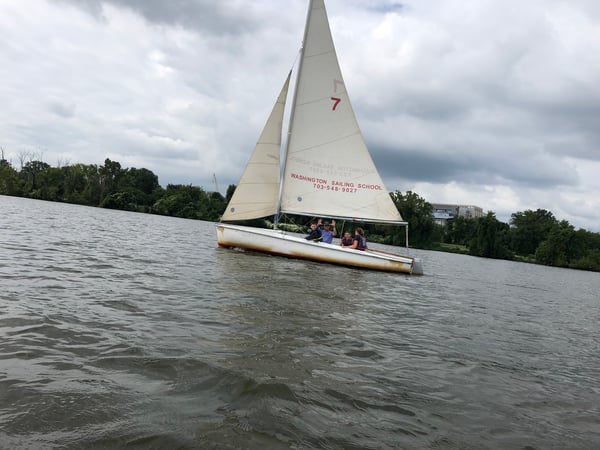
This year, Acton Middle School kicked off its Adventure Program with a trip to the Washington Sailing Marina in Alexandria, VA. The Adventure Program is designed to challenge learners mentally and physically.
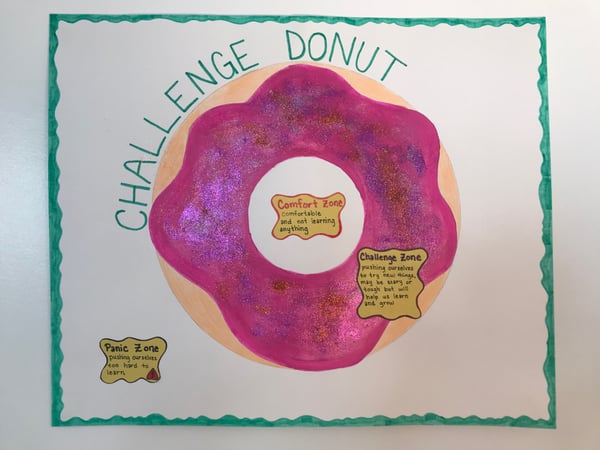
At the beginning of each year, elementary studio learners are introduced to the Challenge Donut. The Challenge Donut is a visual metaphor that helps learners identify when a task is challenging but not overwhelming.

Dear Whittle School Families,
We were sorry to read about the closing of the Whittle School’s DC campus.
We invite those who are quickly searching for alternatives to sign up for a virtual tour of Acton Academy of Washington, DC in Foggy Bottom. We have few spaces for the 2022-23 school year as follows:
- Two spaces left in our Montessori primary program (ages 3-6)
- One space left in our lower elementary program (grades 1-3)
- Two spaces in our upper elementary program (grades 4-5)
- Two spaces in our middle school program (grades 6-8)
Acton Academy of Washington, DC was founded in 2018—about the same time as the Whittle School. We have deliberately chosen to grow slowly, carefully, serving one family at a time. We take our promises seriously. And we have have quietly earned a reputation for excellence.
This year, we were pleased that U.S. News & World Report named Acton on a list of ten top DC private elementary schools including Sidwell Friends, Beauvoir National Cathedral School, Georgetown Day School, and Maret.
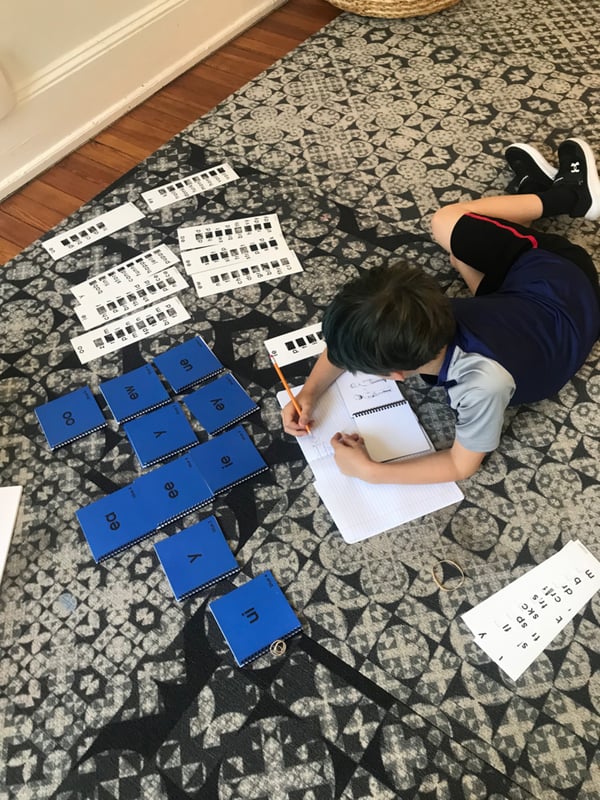
Throughout the year, we use a range of metaphors in the elementary studio to put words to the ebbs and flows of the hero’s journey. These include the “Challenge Donut,” “Rubber Bands,” and “Flow.”
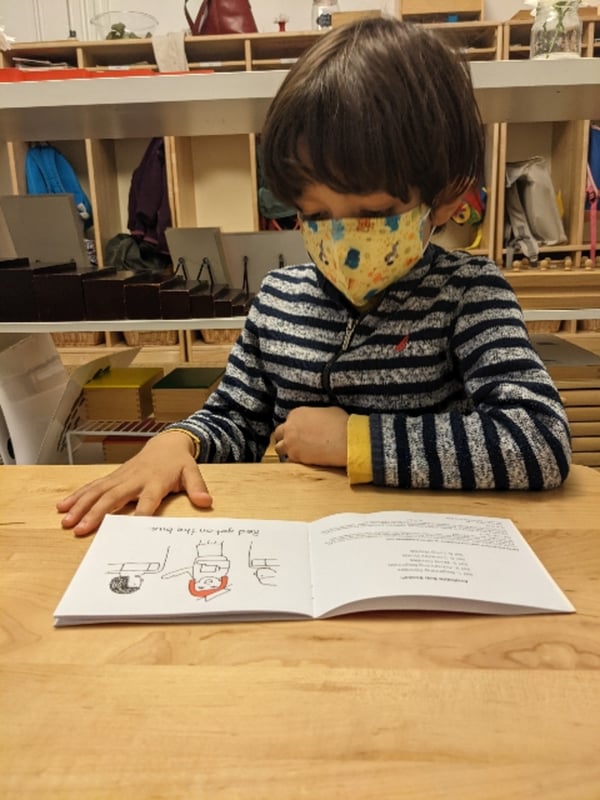
Each month learners regularly discover new books in the studio library. For example, in the spring, books about insects and spring complement the work they find around the studio. Learners will also find books exploring the culture and geography of whichever continent they're currently studying. All learners have access to a library in our studio on the first floor. Learners who nap after lunch in the garden level also have their own rotating selection of books to peruse before drifting off to sleep!
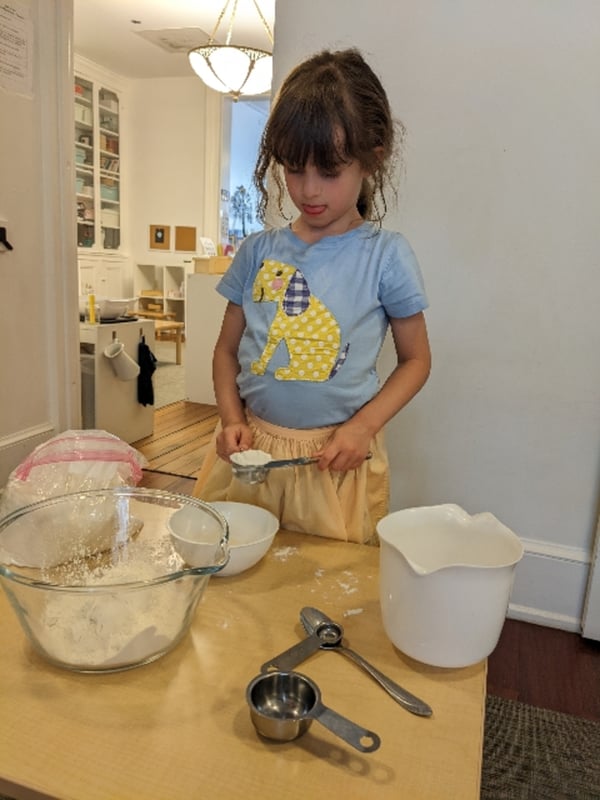
Learners do so much work throughout the day. It is important they have adequate rest and nutrition. Part of this involves making and enjoying snacks in the morning and afternoon!
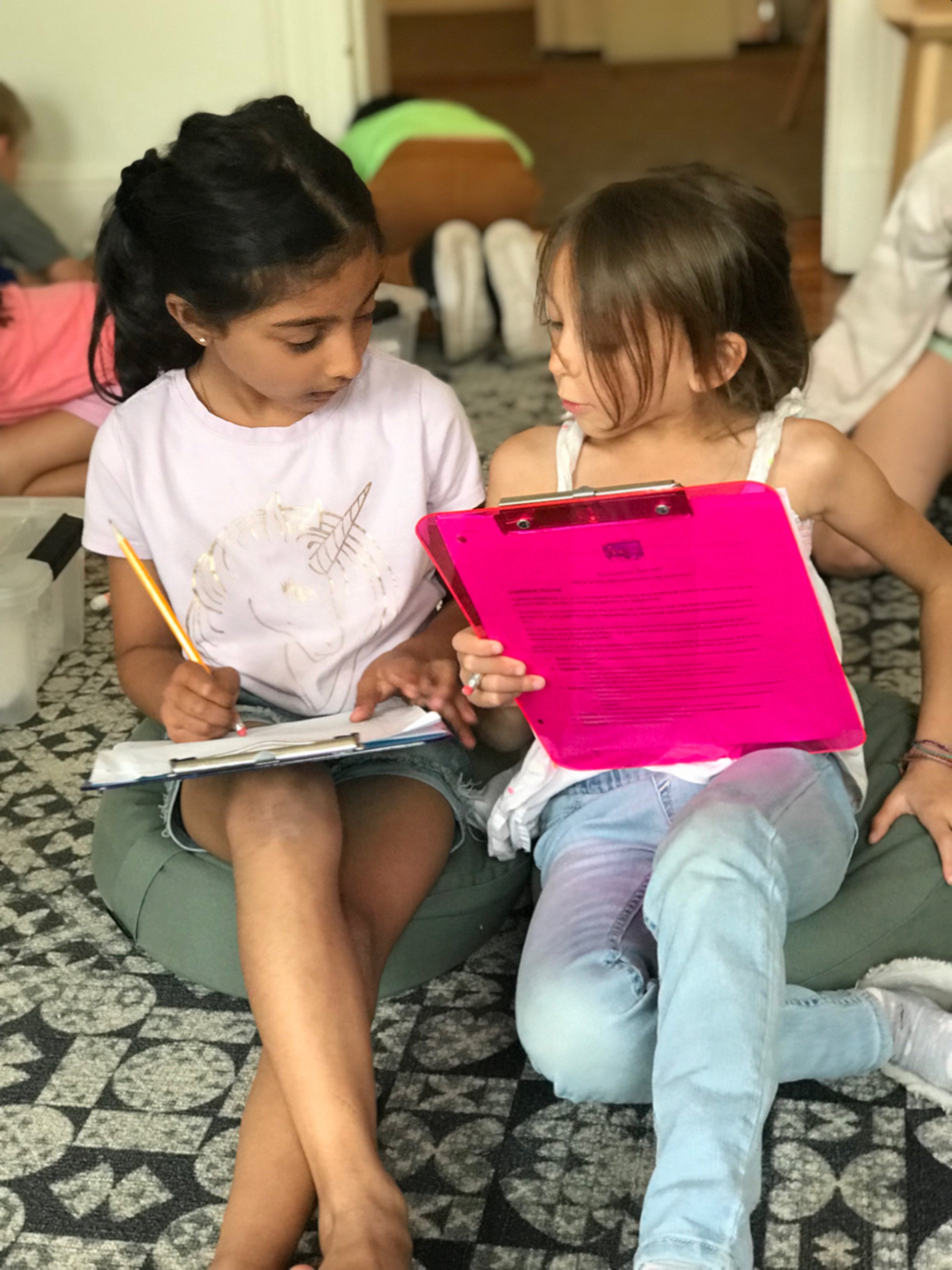
As learners work towards their goals, their journeys are not always linear; there are ebbs and flows. So what do learners do when they hit a wall, need support, or have questions? In the Elementary Studio, we use the 3Bs before the G process.
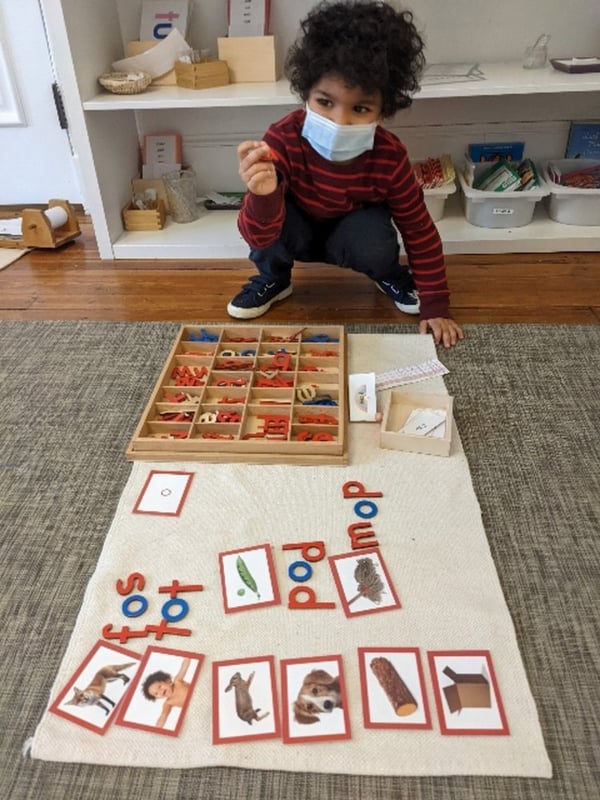
The moveable alphabet is a set of small wooden letters that learners can use to form words. It is a quintessential Montessori material. It allows learners to begin writing after they have developed familiarity with all the sounds of the alphabet and before they have mastered writing with a pencil.
Learners' first foray into phonics begins with the sandpaper letters. They learn consonants via their pronunciation instead of the letter name. For instance, “t” is only ever referred to as “ttt” in the studio and never “tee.” Thus learners become familiar with actual letter sounds as opposed to letter names, which rarely correspond to their actual pronunciation. This also applies for vowels. However, in the beginning stages we only learn the “short” vowel sounds like the “a” in “bat” or “i’ in “bin.” Once learners have mastered one sound per letter they are ready to move on to using the moveable alphabet. It is by using the moveable alphabet that learners will be introduced to long vowel sounds and the various blends and combinations of sounds in phonics.
Learners primarily use the moveable alphabet with the language drawers. Learners first begin with the red drawers. In the first red drawer, learners find a handful of pictures. They use the moveable alphabet to label each picture. In this early stage, words will be very short such as “cat” or “hat.” These words are ideal since their spelling is highly phonetic and more consistent with learners’ basic letter knowledge. Guides will then give the learners “control cards” with each spelling and invite the learners to compare these with their own writing. In this way, learners learn to self-correct as well as practice their reading skills.
In order to further expand on their nascent reading skills the drawer contains a small booklet of words incorporating the same sounds they practiced in their label making. After they read this small book to a guide, learners mark they have completed the drawer and have qualified to advance to the next one! Learners will continue advancing through each red drawer until they reach the seventh drawer. Learners will then work through the orange drawers and additional color drawers in the same fashion until they complete the entire set!
Learners also use the moveable alphabet in other contexts. For example, learners enjoy using the moveable alphabet during map-making work. After learners draw and paint each map, they query the guide for continent or country names. Learners then use their internal bank of sounds to write. While their spellings may not replicate standard spelling at this point, this is not the goal. The aim of this work is to develop learners’ confidence in writing and listening. For example, learners might hear “Canada” and spell it as “Canidu.” Phonetically speaking, this is right on target and we do not correct it at this time.
Ultimately, the moveable alphabet is beloved by learners not only because it offers great sensory feedback, but because it also allows them to explore writing without the added challenge of penmanship. Handwriting is its own challenge and learners work on this separately so as to create more opportunities for success!